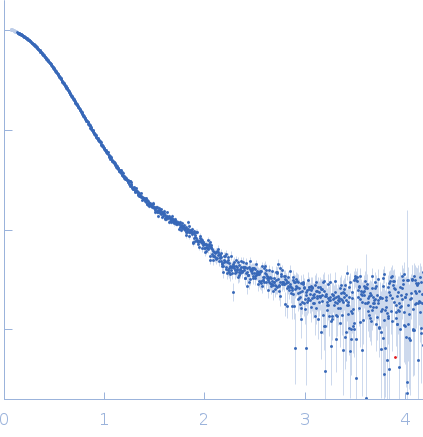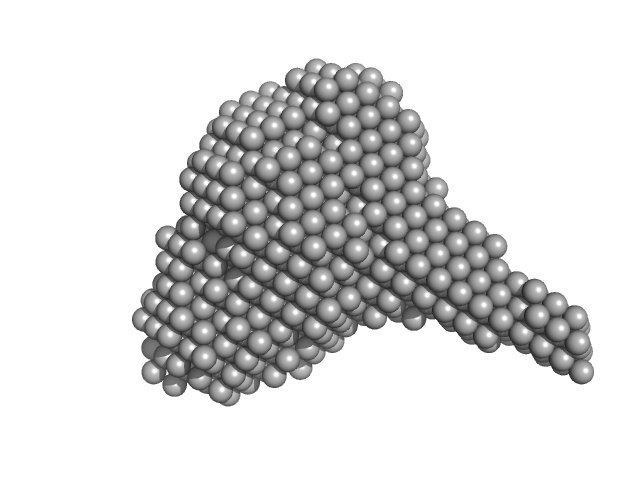|
Synchrotron SAXS data from solutions of nucleoside triphosphate pyrophosphohydrolase (MAZG_Mtb) in 20 mM Tris-HCl, 150 mM NaCl, pH 8 were collected on the BL19U2 beam line at the Shanghai Synchrotron Radiation Facility (SSRF, Shanghai, China) using a Pilatus 1M detector at a sample-detector distance of 2.6 m and at a wavelength of λ = 0.124 nm (I(s) vs s, where s = 4πsinθ/λ, and 2θ is the scattering angle). One solute concentration of 1.00 mg/ml was measured at 10°C. One 1 second frame was collected. The data were normalized to the intensity of the transmitted beam and radially averaged; the scattering of the solvent-blank was subtracted.
|
|
 s, nm-1
s, nm-1
